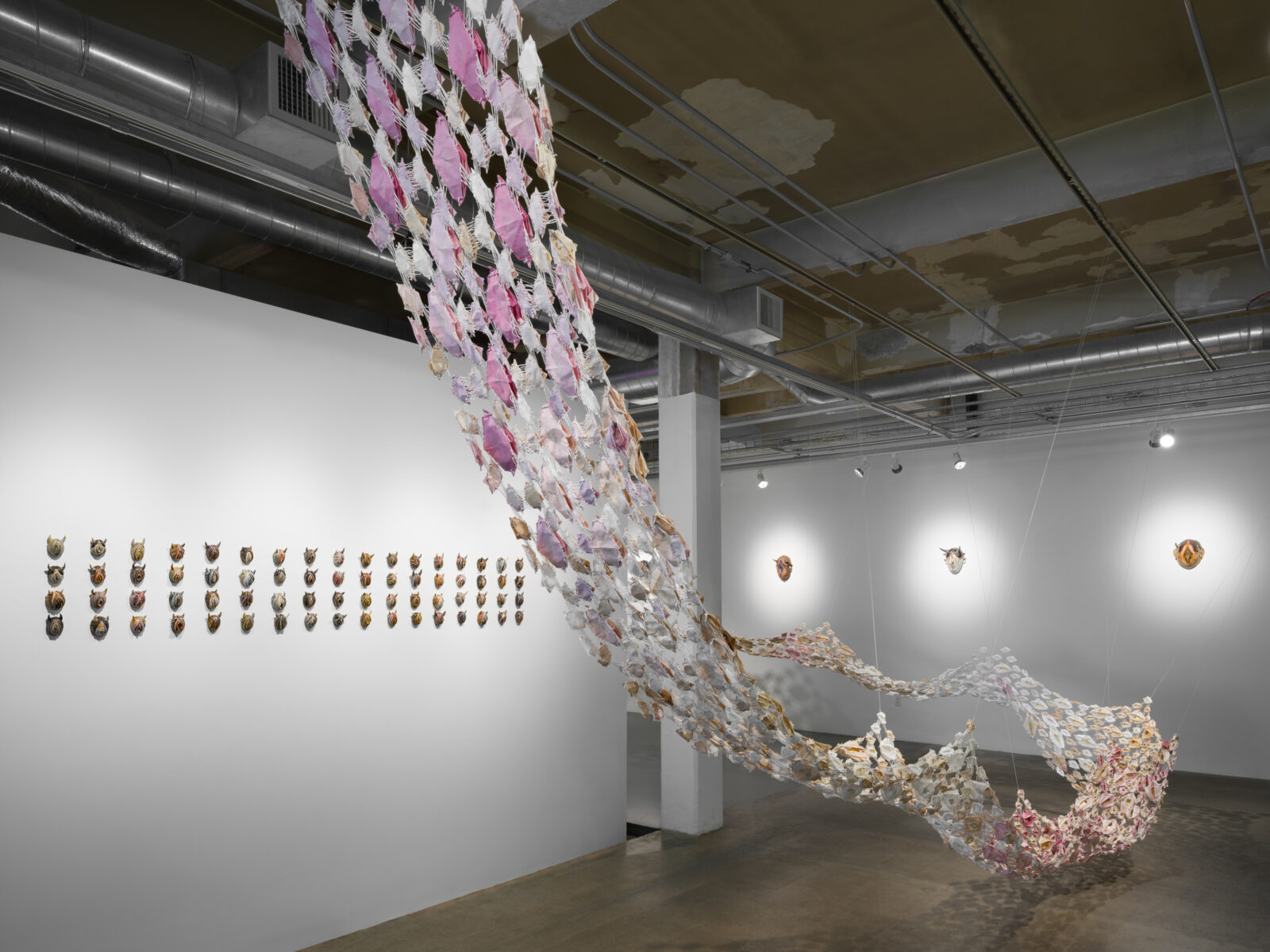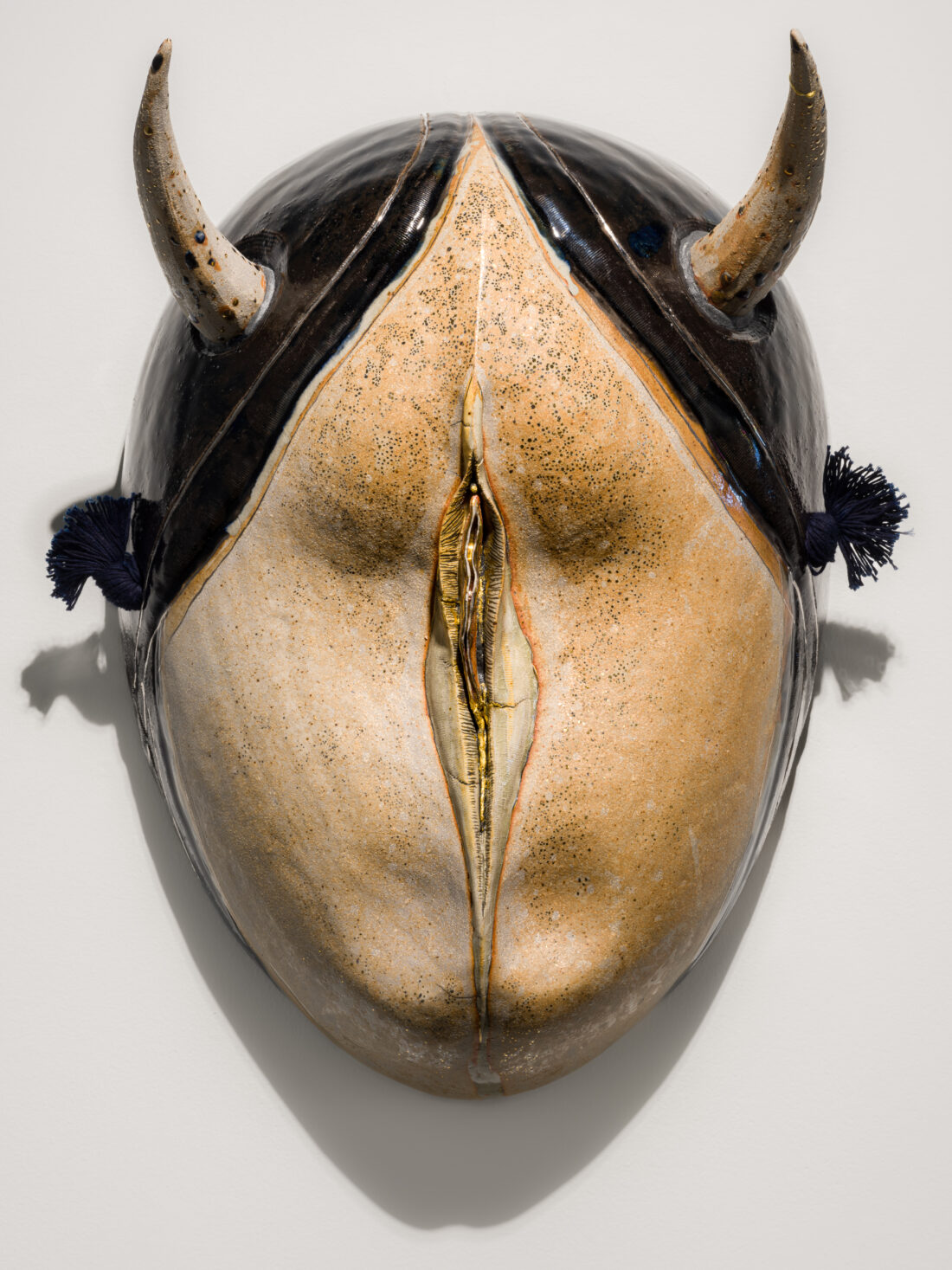Showing Courage: Hanako O’Leary on the freedoms in Kamon

A long and winding drape is hanging from the ceiling at Gallery 4Culture right now, made from hundreds of origami pieces in whites and peaches, taupes and creams, each of them intricately folded into the same form: a vulva.
“I was really excited about the opportunity to have a show where literally every piece of artwork in the gallery is a vulva,” Hanako O’Leary says about her current exhibition, Kamon. “If you’re going to go to the show, there’s nothing else for you to look at,” she laughs. “You have to look at it.”
For O’Leary, a show full of vulvas was a way of asserting freedom for women, an impulse that began taking shape during a particularly intense time in her own life.
In late 2018, O’Leary learned she was pregnant and decided to have an abortion. “It was in the middle of the Trump presidency,” she says. “There was a lot in the air—more than there was before—about women’s rights to their own bodily autonomy and safety.” She thought how different her life would be if she didn’t have reproductive rights or access to abortion care, and she got angry.
Then her anger set in motion a cascade of insights into what it means to be a woman.
With a longtime interest in mythology and archetypes, Shinto aesthetics, and Japanese storytelling culture (her mother is Japanese), O’Leary came across the story of Izanami, the Shinto goddess of the underworld. “In so many myths, once women go down to the underworld, they don’t come back,” she says. “But some cultures have goddesses like Izanami, who are goddesses of life and death, which makes sense—two sides of the same coin.”
Izanami became inspiration for a new body of work, which started with ceramic “Venus jars” and war masks. But after a while, those forms felt too limited. O’Leary was feeling more than just anger.

“The underworld that we as women possess inside our bodies is way bigger than reproductive rights or Western, capitalist ideas of feminism,” she says. “It’s just so much deeper than that—the strength to live in one’s own body and also the courage and intelligence and everything that it takes to actually live for yourself, to be true to yourself, and to be truly there in support of other women.”
Kamon, which means “family crest,” is the latest installment in O’Leary’s ongoing Izanami series. On view through Aug. 1, the exhibition features the origami tapestry as its centerpiece, surrounded by a variety of ceramic masks, large and small.
Many scholars believe the Izanami story originated in the Setonaikai Islands of Japan, which just happens to be where O’Leary’s mother was born. As a child, O’Leary spent two months there every summer visiting family, but she hadn’t been back since her early 20s. In 2021—then in her mid-30s, roughly the same age her mother was when she was born—she returned to reconnect with her relatives and do some research.
During her time in Japan, she noticed how Eastern and Western cultures each cling to their own versions of patriarchy, how societies create some freedoms as they modernize but also rebuild old barriers in new ways. “I felt really challenged about how to decenter that,” O’Leary says. “At the same time, I was coming to terms with my own queerness and my attraction for women and my lesbianism, and kind of making sense of all that.”
One bit of serendipity sparked the idea for the origami centerpiece. While on the island, O’Leary received a care package from her girlfriend. Inside? An origami vulva. “I was like, oh my God, this is such a cute fold!” she says. “It’s so beautiful.”
Back in Seattle, O’Leary originally imagined that she would fold all the origami herself, then quickly realized she was going to need help to make the tapestry as big as she wanted it to be. She posted a video of herself making one piece on Instagram and asked if anyone would be interested in making more. Then she hosted several origami-making gatherings, inviting people “who identify as daughters” to fold as many as they wanted to fold and then write down their maiden names, or their mothers’ maiden names, or the maiden names of their matrilineal lines as far back as they wished, alongside the places where their mothers’ families were from.
“The idea being that you’re remembering and holding onto these people and also the land that raised them and, in a sense, raised you,” O’Leary says. On Saturday, July 27, she will give an artist talk at 4Culture, which will be followed by an origami workshop. The vulvas folded at that event will get stitched onto the still-growing origami form.
Making the work in Kamon intensified O’Leary’s commitment to women’s courage, power, and freedom. It also deepened her gratitude toward all the women of the past who did their best and made sacrifices with future generations in mind.
“While I inherit that integrity and this sense of care and responsibility, I also want to be able to push back on what those past ideas are and see what’s actually possible for me in this generation and what kind of room I can create for the next one,” she says. “I am a woman—and that means I can be anything. I can express my femininity in any way I choose at any given time.”
O’Leary will give a free artist talk at 4Culture on Saturday, July 27 at 11 a.m., and an origami workshop will follow from noon to 2 p.m. The workshop is intended for those who identify as women or daughters. Register for the workshop here.
